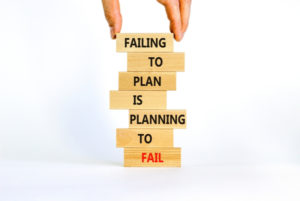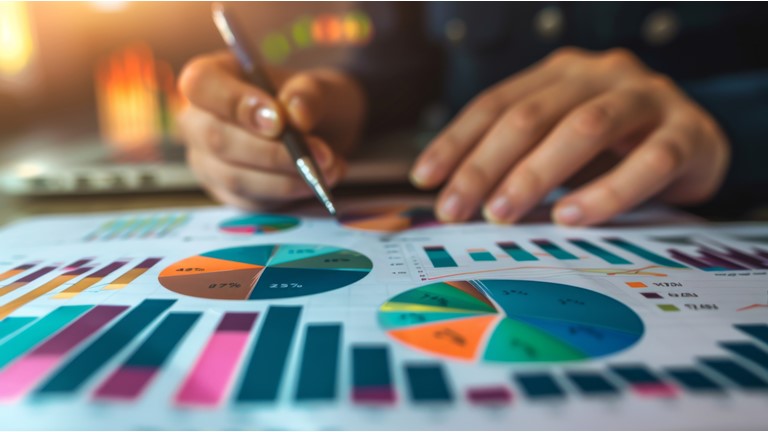Dear Survivor,

You read in last month’s Survive & Thrive about my recent trip to Key West. One night, after dinner with friends, sitting around the outdoor dining room table, they shared stories about their COVID trip pulling an RV trailer from Key West to Colorado to Disney—specifically Fort Wilderness—and back. They made incredible memories, despite some scary hairpin turns driving up and around the Rockies.
Afterward, I told them about our trip to Fort Wilderness as a kid. “I remember one time we pulled in around midnight in our Winnebago,” I told them. “Parked at the reservation building, we ran inside with my dad, got our site number and location, ran back, and when he went to start the Winnebago back up–nothing. ‘You’ve got to be kidding me,’ he said, putting his head down and arms around the steering wheel in despair. ‘Come on,’ he said. Then, he gave the key one more turn, and ‘varoom!’ we were back in action.”
Now, this isn’t a Disney bashing story. This isn’t about “wokeness.” There’re plenty of paying guests, like you and me, who aren’t happy with what’s going on. This is about being able to go to Disney as a family when I was a kid and realizing today how hard it is to make trips like that happen. When my mom was asked how we did it, her favorite phrase was, “Prior planning. It’s all about ‘PP,’” she would say. “Prior planning.” Ironically, my parents will be in Disney World today as they make their way south for a winter reprieve in Delray Beach, FL. Isn’t it time you got out there and explored?
OK, changing gears for a second. This weekend we watched “King Richard” with Will Smith as Richard Williams, father of Venus and Serena. We’ve wanted to watch it for a while now, and then came the “slap” heard ‘round the world. And we thought, “We’re not going to watch it and support Hollywood.” We watched it anyway.
As an aside, if people took the same amount of interest in understanding what’s going on in Washington as they have in the “slap,” we’d be in a better place. But this isn’t a political piece. I like Chris Rock from SNL, and my first ever concert was DJ Jazzy Jeff and the Fresh Prince (Will Smith).
The movie? Loved it. Especially the part where the five Williams girls, mom, and dad drive to Florida in a Coachman RV. I felt like I was there with them, bringing me back to our Winnebago, seeing America just like they were. It was fun. But the part that’s sticking with me this morning, as I write to you, is how Richard would tape a poster board to the back fence, of the public tennis court in Compton, California, before the start of every practice. It read:
“If You Fail to Plan, You Plan to Fail.”
The most important ingredient to prior planning is you, not some algorithm spitting out projections that have nothing to do with your work. You are your number one investment. Keep moving forward. Keep pushing. Before you know it, you’ll have a lifetime of success to look back upon. You can do this. I believe in you.
Are You My Mother? Are You a Prior Planner?
Do you have a plan? Are you my mother? Because when I hear about planning, that’s who immediately comes to mind. You know my mom’s a planner. When asked how she was able to take certain trips or go to space camp as a teacher, she would respond, “Prior planning.” As a teacher, she taught her students to believe in themselves, and if they wanted something in life, they could get it with some simple prior planning. Easy to say. Hard to do—much more exciting than arithmetic. That’s the beauty of her teaching.
Prior planning. Isn’t that what successful retirement investing is all about? Of course, it is. You can do it. It’s up to you, not some one-size-fits-all model. Because when I hear about robo-advisors, I wonder, “What will that tell investors about themselves?” As investors, sometimes we are our own worst enemy. You need a plan. You need someone who can help you stick to it. Someone you trust.
Because the playing field changes. Life is busy no matter how old you are, working or retired. There’s always something that needs to get done today. Why do investments get stuck with the leftovers—your leftover time—when you’re not at your best?
Does the robo-advisor understand what’s bothering you? Does it know you? I just don’t see the personal relationship in either option, and it boggles the mind how much weight investors put into these reports in the most crucial saving years of their lives.
Live the island life. But don’t live it feeling like you’re surrounded by water creeping higher and higher. It’s easy to become overwhelmed by life. But as my mom would tell me when I’d complain about a test grade—“You’re the key to your success.” As an investor, once you realize that, you put yourself light-years ahead of most others who are hoping and praying for the market to do something for them.
What’s the Real Value of YOUR Financial Plan Today?
“Do you do financial planning?”
“How much income can I expect to draw?”
“Do you consider taxes?”
“Will I receive checks?”
These are just some of the questions I receive from investors. If you’re with me, you know these items are part of our regular conversations. If you’re not with me, then I hope you have someone you can depend on for the answers you need.
But for today, let’s tackle some of these and get into this. As I’ve said before, investing is more of an art than a science. As we all know, you can’t always follow “the science.” In other words, glossy financial plans or financial engines have an expiration date. Life changes. Your financial situation changes. You change. Markets change. You adjust to deal with them. It’s what we talk about in my conversations with you.
How about your income? How much can you draw? Well, it depends on how important it is for you not to outlive your money. When I tell investors what I believe to be a reasonable draw rate, I either get a “Good, we can do that,” or silence, then more pause, and “We were hoping for more.” Sorry. Look I’m Your Survival Guy. My palms sweat when investors tell me they “need” this or “that” from the market. I’m interested in reality—what you’ve saved, what you’ve earned—and I craft a reasonable plan from there. That’s it.
The key ingredient or input is YOU. You’re the single most important factor in whether or not you’ll have the retirement you deserve. You control your success in your work, and you control how much you spend and how much you’ve saved. My job is to work with your lifetime of savings and sacrifice—to be your Prudent Man—not to be the guy making false promises to get your business. There’re plenty of “products” those guys would love to put you in and charge exorbitant fees.
Taxes, social security, second homes, downsizing from your existing home, vacations, education, sale of businesses, saving for grandchildren, establishing trusts, and keeping beneficiaries up to date, are a few of the ingredients of my business. In my conversations with you, we talk about these things. We check in with each other. We make sure we’re always on the same page. Are we rowing in the same direction? Simple, yet hard to do.
What good is a 15-year plan when the world you were investing in just two years ago is completely different?
Survive and Thrive this Month.
Warm regards,
E.J.,
“Your Survival Guy”
- If someone forwarded this to you, and you want to learn more about Your Survival Guy, read about me here.
- If you would like to contact me and receive a response, please email me at ejsmith@yoursurvivalguy.com.
- Would you like to receive an email alert letting you know when Survive and Thrive is published each month? You can subscribe to my free email here.
- You can also follow me on Gab, MeWe, and Gettr.
P.S. Here’s what successful planning looks like in a disaster. You may remember back in 2018, when Hurricane Maria hit Puerto Rico, devastating the island and its infrastructure. And you may remember when in January 2020, the people of Puerto Rico suffered again after being hit by a violent earthquake. Needless to say, the island has been a case study in survival. After enduring so many disasters, Puerto Ricans have learned that self-reliance is the only way. Now the islanders have suffered another disaster, albeit not quite as severe. But their response shows how much the island has learned about resilience. On Wednesday, April 6, a fire hit one of the island’s electricity plants causing a blackout. Despite the outage, hospitals and other critical infrastructure facilities were able to keep operating after having prepared themselves with generators. Talal Ansari reports for the Wall Street Journal:
Hospitals and other health facilities relied on generators and batteries to continue operations, according to government officials on social media. Many airports on the island were functioning as they operated on contingency plans, according to the Puerto Rico Ports Authority. The Luis Muñoz Marín International Airport in San Juan was operating as normal, thanks to generator systems, the airport said in a tweet.
Videos on social media, including from official government accounts, showed the fire at the Costa Sur generation plant, one of the four main plants on the island. Firefighters worked into the night to put out the blaze.
Puerto Rico has continued to experience severe electricity issues, including blackouts, due to damage the power grid suffered after Hurricane Maria ravaged much of the island in 2017.
Last year, Luma suffered a cyberattack shortly before a fire at a substation in San Juan, causing a blackout for hundreds of thousands of residents.
You know that I always think you should have a plan. Whether it’s investments, survival, or saving money for your grandchildren, you need to work methodically, with a purpose. That means having a plan. You can’t work toward a purpose without a plan and expect to achieve your goals. But you must stay serious, and stay motivated to achieve those goals.
P.P.S. Recently a reader friend, who has noticed Your Survival Guy encouraging Americans to find their place in one of the country’s Super States, sent this email discussing his own living plan, which includes a top tier duo. He writes:
EJ,
I’m personally not advocating for the masses moving to our state, but thought that this might be of interest.
We’ve been enjoying Florida winters and New Hampshire summers for almost 10 years. Works well for us!
Regards,
D
The combination of New Hampshire and Florida, from a tax perspective, could be America’s best for Snowbirds looking to enjoy warmer climates year-round.
At the bottom of his letter, he adds a link to an article on Humbledollar.com by John Yeigh, who gives good advice to anyone leaving a high tax state for a low or no-tax state like New Hampshire or Florida. Yeigh writes:
We’ve learned that high-tax states perform residency audits on those that change their residency status while still retaining a home in their old state, which is what we plan to do. Indeed, physical residency is tough to game. Cell phone data, electronic toll road collections, internet activity and video camera recordings can all provide a digital footprint for tax authorities to confirm where we live.
One tax-avoidance strategy is to move fulltime into a recreational vehicle and establish your permanent residence, or domicile, at an RV park in a zero income-tax state. Since the no-tax state doesn’t care about your whereabouts, RV residents may not even reside in that state for most of the year. Boat owners have utilized the same strategy to shift residency.
When changing residency from a high-tax state without selling your house, it’s important to cut many of your ties with your old state. Merely changing your driver’s license and spending less than half the year there may not satisfy tax authorities. They may claim you’re still enjoying the benefits of state residency even if you spend much of your time elsewhere.
That’s why there are apps that allow you to track your residency, including TaxBird, TaxDay and Monaeo. Even this may not be enough for RV residents who continue with many personal activities—such as doctor’s appointments, mail deliveries and property storage units—in their former high-tax state.
P.P.P.S. Did you know Joe Biden is planning the highest tax rate in the world for Americans? You may recall, back in 2019 and the early days of 2020 when the U.S. economy was humming like a well-oiled engine. The Trump tax cuts of 2017 propelled America’s economy forward in ways it hadn’t experienced since the 2008 financial collapse. Now that COVID is mostly over, the economy is trying hard to come back, but Joe Biden is eager to put a lid on all that growth by raising taxes up to the highest rates in the developed world. Fox News’ Megan Henney reports:
The U.S. would have the highest personal income tax rate in the developed world under the newest White House proposal that would dramatically raise the rates paid by well-off Americans.
The budget blueprint that President Biden unveiled last week includes several tax hikes on the ultra-wealthy and corporations that would push the top U.S. rates on both individual and corporate income to the highest level in the developed world, according to a new analysis published by the nonpartisan Tax Foundation.
The Biden team’s proposal would raise the average top tax rate on personal income to 57.4%, the steepest rate in the 38-member Organization for Economic Co-operation and Development.
The president laid out a series of tax increases including a “Billionaire Minimum Income Tax” that would establish a 20% minimum tax on all U.S. households worth more than $100 million, or about 0.01% of Americans.
Under the proposal, the top sliver of U.S. households would be required to pay a tax rate of at least 20% on their full income, or the combination of wage income and whatever they made in unrealized gains. If a billionaire is not paying 20% on their income, they will owe a “top-up payment” that makes up the difference to meet the new minimum.
The White House projected that more than half the revenue generated by the tax would stem from the country’s 700 billionaires.
Night falls at the Capitol in Washington, Thursday, Dec. 2, 2021, with the deadline to fund the government approaching. ( AP Photo/J. Scott Applewhite / AP Newsroom)
Biden also proposed raising the corporate tax rate to 28% from 21% as part of his budget request and pitched a global minimum tax that’s designed to crack down on offshore tax havens. Arizona Sen. Kyrsten Sinema has previously said that she will not support a corporate tax increase.
On top of that, the top marginal tax rate on ordinary income is already scheduled to increase from 37% to 39.6% in 2026 when parts of Republicans’ 2017 tax law expire. Biden’s budget also assumes that his massive spending bill – the Build Back Better plan – becomes law.
That plan included a slew of tax hikes including a 5% surcharge on modified adjusted gross income (MAGI) above $10 million, plus a 3% charge on MAGI above $25 million, for a total increase of 8% – which is equivalent to about a 9.1% tax rate on taxable income, the analysis shows.
It’s hard to plan for retirement when your tax rate keeps changing. Inconsistent policies that veer off course at the whim of a politician make life hard on American savers.
Download this post as a PDF by clicking here.




